History of Westport, Ontario
Nestled between two of the more prominent hills of the lower Precambrian Shield, the Village of Westport began its existence as a milling location. The lakes to the west provided ample motive power as they drained through the valley to Rideau Lake. The first settlers to the Westport area arrived in the period between 1810 and 1820. The land on which Westport now sits was originally granted by the Crown to a Mr. Hunter, but he never settled in the area and it was eventually purchased by Reuben Sherwood in 1817. Some of this land was later purchased by the Stoddard and Manhard families. The small community was known as Head of the Lake. In 1828, Stoddard built a saw mill and in 1829 the Manhards built a saw mill and grist mill (now The GristMill Place). It became known at that time as Manhard’s Mills.
The Rideau Canal opened in 1832 and the village had access to Kingston on Lake Ontario, as well as Bytown (Ottawa) and Montreal. Two local merchants, Aaron Chambers and Lewis Cameron, named the village Westport in 1841, the name reflecting its location at the west end of Upper Rideau Lake. The post office dates from 1845. Because of the available power and shipping facilities, new industries began operation. Sam Weir’s Grist Mill, Joel Clark’s Woolen Mill, David Gowan’s Brickyard, Owen Martin’s Ashery, Matthew Scott’s Tannery, Conley and Truelove’s Boat, Furniture and Coffin Manufacturing (today the Museum) and W.H. Fredenburgh’s Furniture Factory provided employment for a growing population. The first post office in Westport opened in 1845, and the Town Hall was constructed in 1853.
In 1864, Declan Foley built a large department store at 40 Main Street, and also constructed large docks on the lake where steam boats landed. The major mills were in the hands of George Crawford who rented them to a series of different individuals. By 1875, Crawford sold all of the mills to William Fredenburgh who a year later built his new home at 2 Bedford Street. This home later became the Lexena Hotel, owned by Alex and Lena Brown. This facility today is a much expanded Cove Country Inn.
The village continued to grow and in February, 1888 the population was 700 when the first train on the Brockville, Westport and Sault St. Marie Railway arrived to the exuberant rejoicing of the inhabitants. The train brought to Westport an ever increasing number of tourists, of whom 23 had built cottages in the area by the turn of the century.
The village of Westport was incorporated in 1904 when it separated from North Crosby Township.
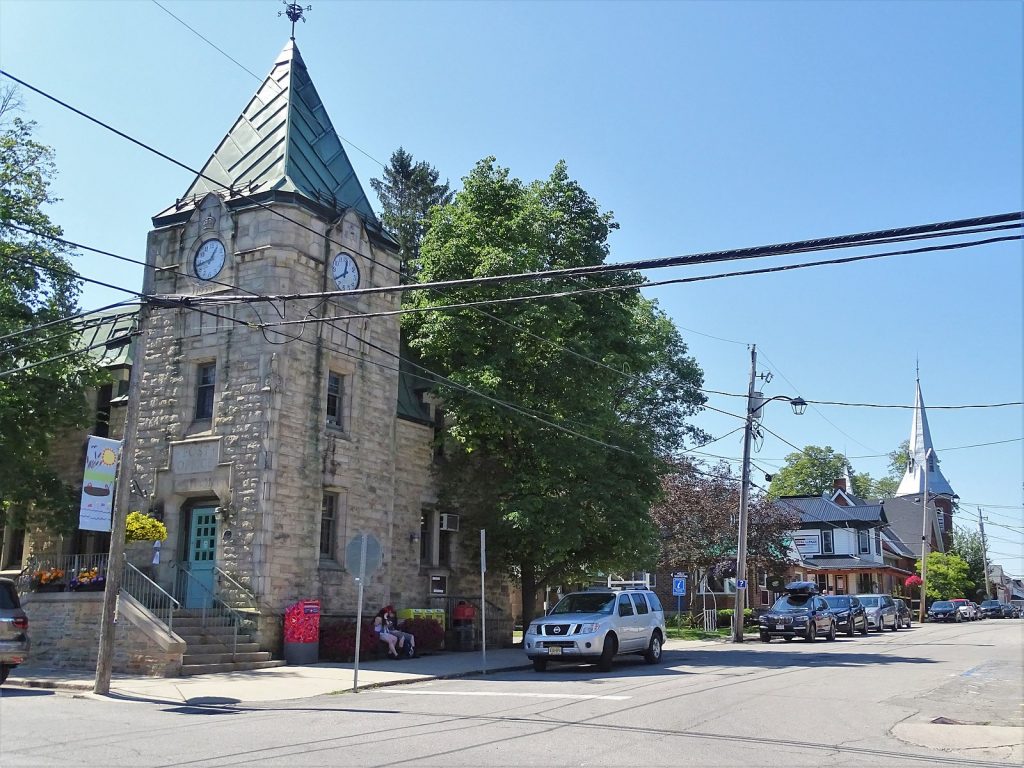
Westport Post Office
Like much of the surrounding area, Westport received a large number of Irish immigrants in the 1840s through the 1860s, following the Great Famine. St. Edward’s Catholic Church at the corner of Concession and Bedford, built in 1859, was an early cultural centre for the largely Catholic Irish immigrants.
Westport remained a thriving commercial centre through the 19th century and into the 20th century. The building of the Rideau Canal allowed goods to be shipped north to Ottawa and south to Kingston. In 1882, an entrepreneur named R.G. Harvey proposed an ambitious project to build a railway from Brockville to Sault Ste. Marie. The project ran out of money after the section from Brockville to Westport had been completed in 1888. The Brockville-Westport line moved goods, mail and people to and from the St. Lawrence River and Westport. Many cheese factories were located between Brockville and Westport. The train was therefore known as the “cheese run.” The rail line also brought tourists north to Westport starting a tradition of Westport as a tourist destination. The last train travelled the Brockville, Westport and North-Western Railway line in 1952.
History of the GristMill Place
1829
The Gristmill Place was named from its history as one of two mills built in the area by the Manhard brothers in 1829. The mill used the stream flowing from the current Westport Sand Lake to the Upper Rideau Lake to grind cereal grain into flour (grist refers to grain which has been prepared for grinding).
1871
Westport, 1871 ~ from the Archives of The Rideau District Museum
Below is one of the earliest-known photographs of Westport, circa 1871. With open fields in the distance and Fredenburgh’s Furniture Factory in the foreground, many of our current landmarks are absent in this old picture. Prior to construction in (circa) 1876, the lot where W.H. Fredenburgh would later build his home on the northwest corner of Bedford and Main Streets stands vacant (currently The Cove Country Inn). The year following this photograph (1872), Hiram Lockwood would construct his general store (currently the home of Lower Mountain Mercantile).
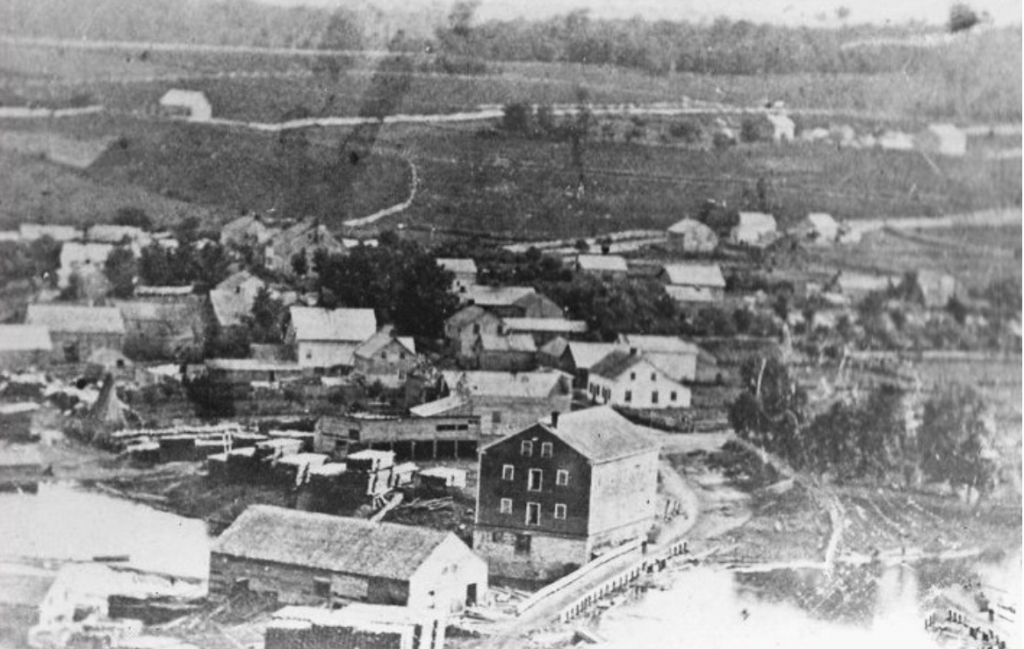
1920-1927
There probably aren’t a lot of locals that can still remember The Ryan. Built in the 1920’s, The 40 bedroom Ryan was touted as being one of the finest hotels in all of Canada. With fishing from the balconies that faced the water, and a river running through the basement where boats could be driven inside the hotel, it was widely promoted and was said to be fully booked for its grand opening. A grand opening that never happened. The Ryan was suspiciously destroyed by fire before it ever saw its first guest. We will talk more about The Ryan when we cover the fires of Westport at a later date. Destroyed by fire under mysterious circumstances, The Ryan was situated at the water’s edge below the annex to The Cove. The current GristMill Place is built on part of the foundation of what was once thought of as ‘Westport’s white elephant’.
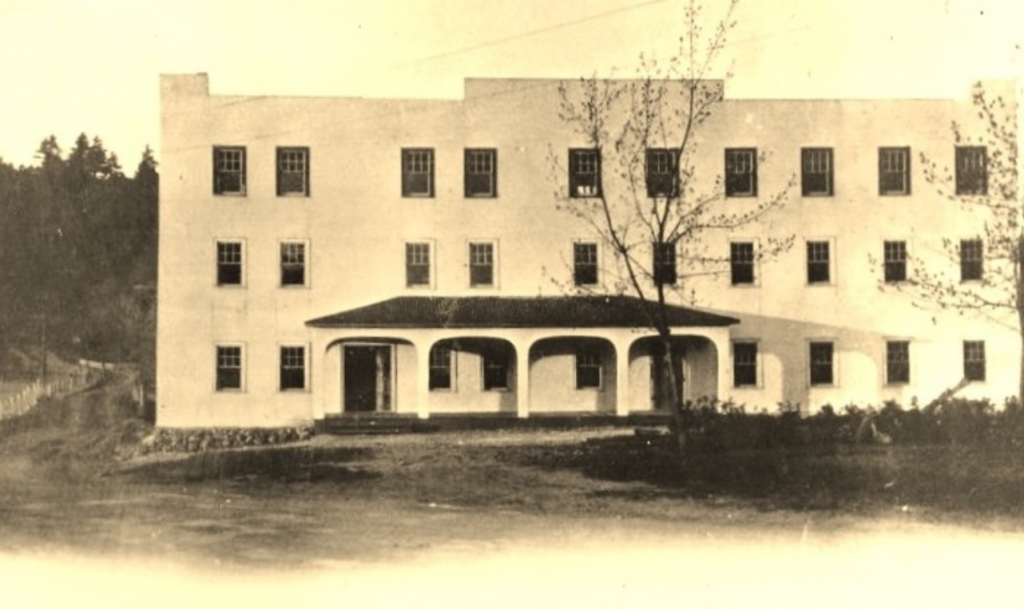
1942
The Ryan hotel ruins were then purchased by architect Horace Roberts who built a home. Mr Roberts, who passed away in 1983, designed numerous schools in the area. In the picture below, the house designed and build by Roberts can be seen.
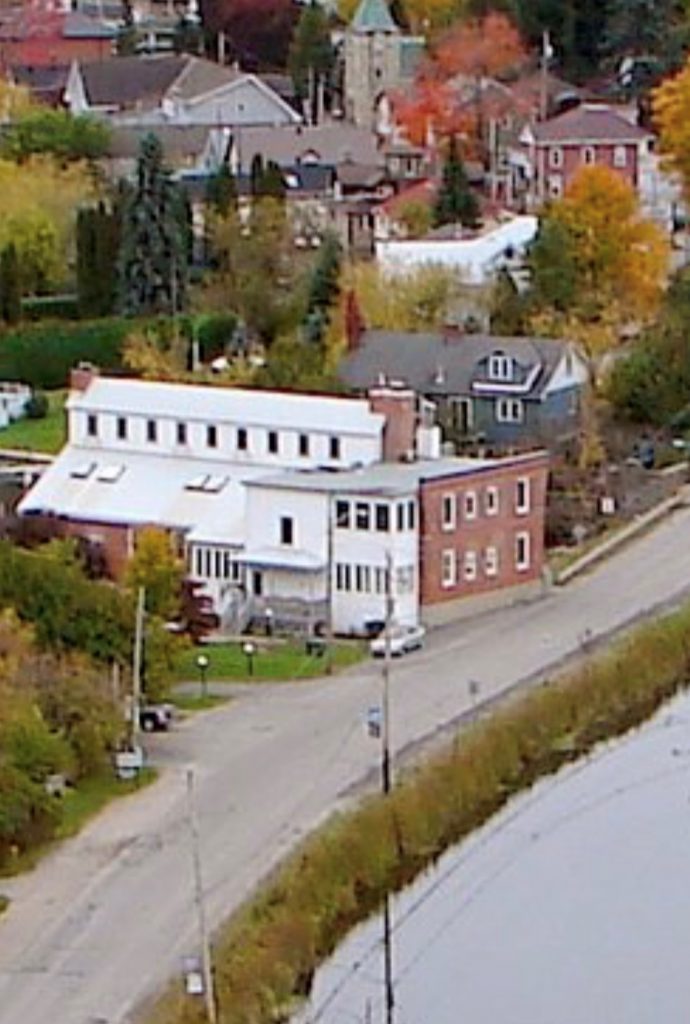
Mr Roberts passed on the house to his son, Tom Roberts who owned the Tom Cat Company, and fabricated baseball bats out of maple wood at the site (currently the games room) for professional baseball players.
2011
In 2011 the previous owner of the GristMill Place, Mr. Gerald Schwinghamer bought the Roberts property, and undertook major renovation work including adding a third floor to the house. During this time, the house was also used as an art gallery.
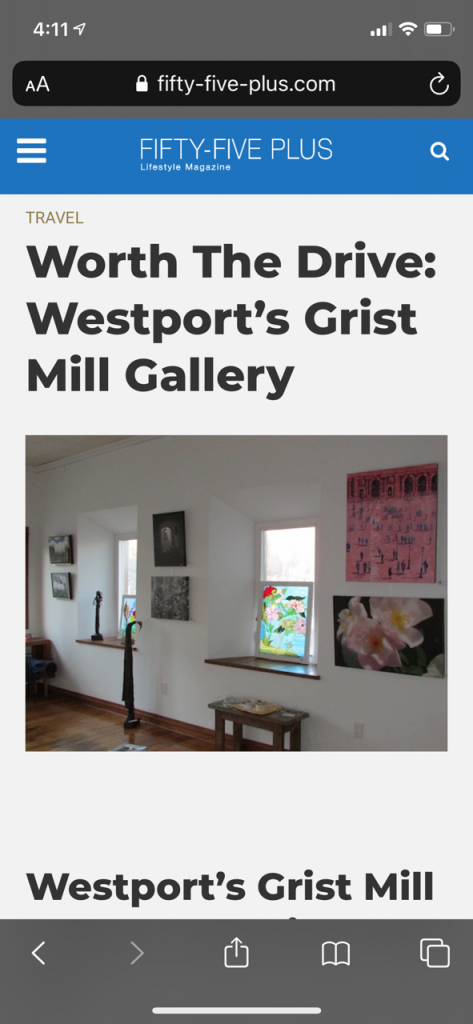
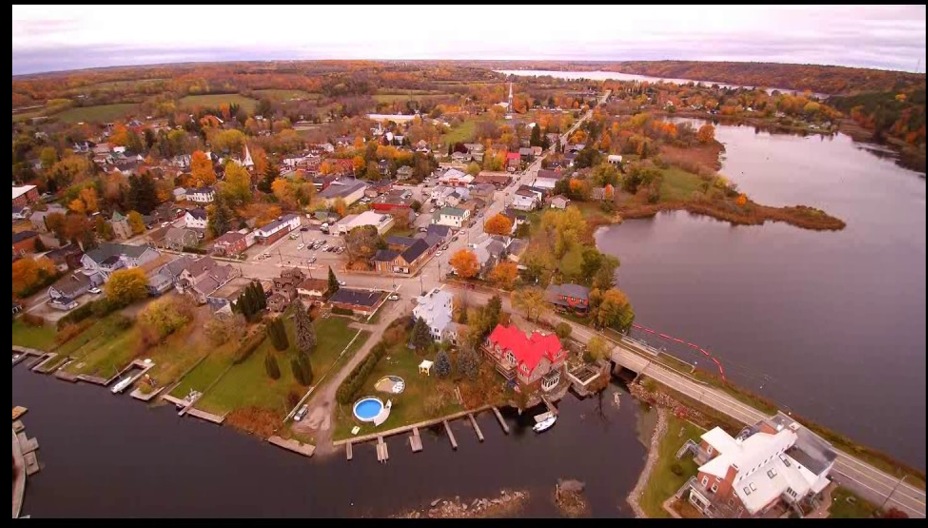
2020
In 2020 it was purchased by the current owners, JF and Kathy, who updated and completed the renovations bringing it to its current design and layout.